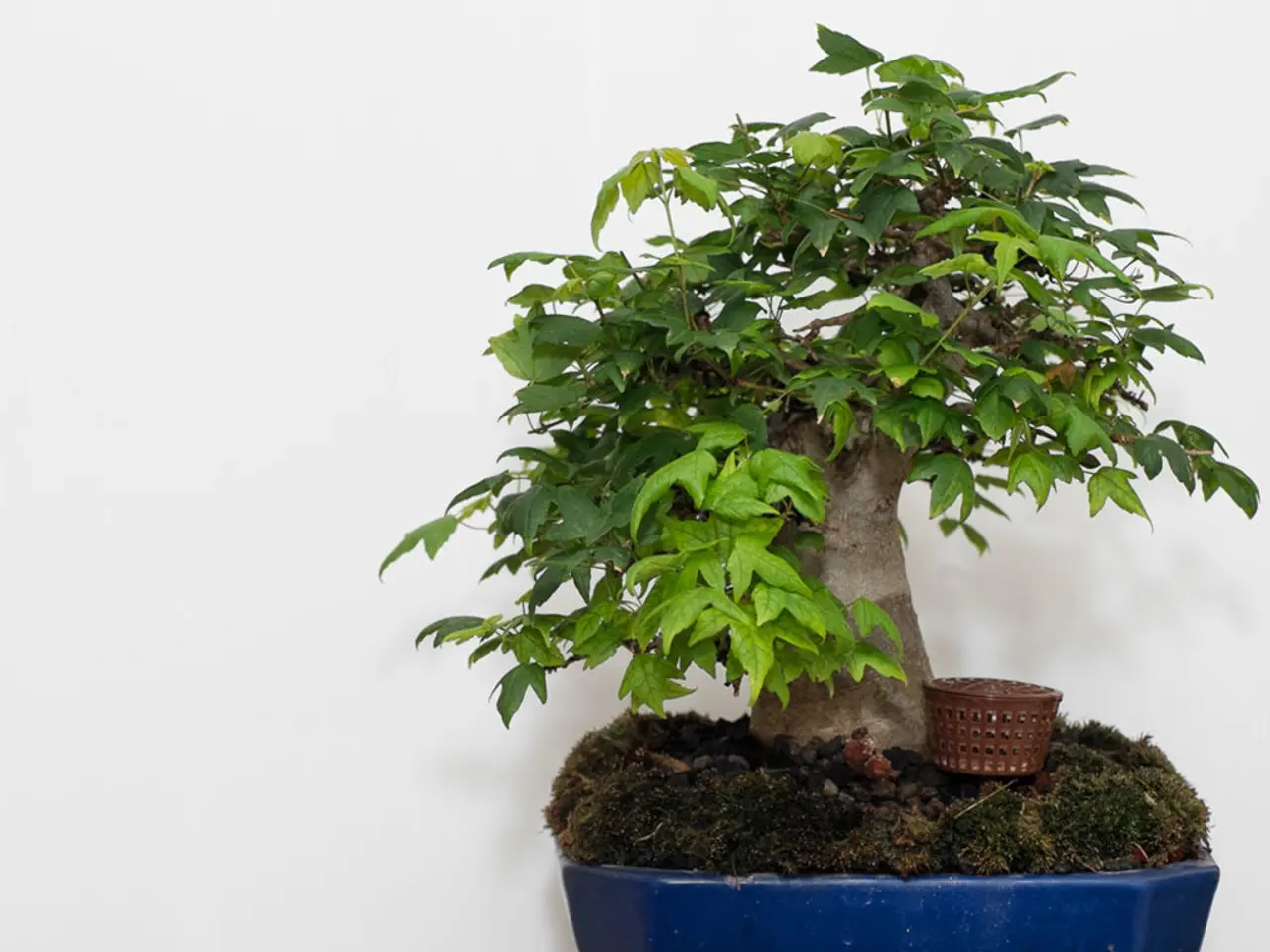Maintaining Optimal Humidity for Bonsai: Advice on Achieving Perfect Levels
In the quest to nurture a thriving bonsai tree indoors, maintaining the right humidity levels is crucial. Here's a guide to help you create the perfect environment for your bonsai.
Firstly, it's essential to regularly check and adjust humidity levels according to seasonal changes, temperature, and the specific needs of your bonsai species. A daily misting routine, ideally performed in the morning and afternoon, can help maintain a humidity level between 40-60%.
Humidity trays are an effective method for controlling humidity levels in dry indoor environments. By placing a shallow container filled with water and a moist substrate, like expanded shale or LECA, beneath the bonsai pot, water evaporates around the plant, raising ambient humidity without waterlogging the roots.
Misting techniques and schedules can simulate natural humidity levels for indoor bonsai, promoting growth and development, especially for species such as junipers that benefit from higher humidity. For bonsai species preferring high humidity, terrariums can create a microclimate with higher humidity, but they must have good air circulation to prevent fungal problems and should avoid direct sunlight or overheating.
When it comes to maintaining ideal humidity levels for indoor bonsai in dry environments, humidifiers are a reliable and controlled solution, though they may be costly and less practical for single plants.
Additional practical tips include monitoring humidity using a hygrometer to maintain levels appropriate for the specific bonsai species (often above 50% relative humidity). It's also important to avoid exposure to air conditioning and heating vents which dry out the air, and to use well-draining soil to keep roots moist but not waterlogged.
Placing bonsai in indirect light can help avoid heat that could reduce humidity or burn foliage, especially when using enclosed humidity devices like terrariums. Humidifying with coverings and tents can effectively create a humid microclimate, trapping moisture and maintaining a consistent humidity level.
Not all bonsai species require the same humidity levels. Tropical and subtropical species generally require higher humidity, while temperate species can thrive in relatively drier conditions. Cloche coverings can also protect the trees from extreme temperatures, drafts, and other environmental stressors.
When grouping bonsai for humidity, choose plants with similar humidity requirements, select plants with varying transpiration rates, and assess the size and density of the plants. Accurate humidity monitoring is vital for verifying that bonsai trees receive the ideal amount of moisture. A spray bottle can be used to mist your bonsai tree daily, as long as you avoid over-misting.
By following these tips, you can create an optimal environment for your indoor bonsai, ensuring its continued growth and development. Happy bonsai nurturing!
[1] Source: Bonsai Empire (www.bonsaiempire.com) [2] Source: The Bonsai Garden (www.thebonsaigarden.com) [3] Source: Bonsai Tonight (www.bonsaitonight.com)
- To enhance your indoor lifestyle, consider investing in fashion-and-beauty products that complement your personal style, while also exploring food-and-drink recipes for meals that nourish your body.
- For home-and-garden enthusiasts, an effective way to control humidity levels, particularly in dry indoor environments, is by using humidity trays. Place a shallow container filled with water and a moist substrate beneath a bonsai pot to simulate natural humidity.
- Traveling to diverse destinations can enrich relationships, as new experiences foster deeper bonds with friends, family, and even pets. Plan trips that align with your pets' needs, ensuring they remain comfortable throughout the journey.
- If a passion for cars fuels your self-development, purchase a hybrid or electric vehicle to reduce your carbon footprint, contributing to the sustainability of the Earth for future generations.
- As an avid learner, dedicate time each day to education-and-self-development, such as reading, taking an online course, or practicing meditation. Continuous learning fosters personal growth and self-improvement.
- On weekends, embark on exciting shopping sprees or adventures in casino-and-gambling destinations, such as Las Vegas, Macau, or Atlantic City. Experiment with new games and enjoy the ambiance, but remember to gamble responsibly. Sports enthusiasts can attend live events to immerse themselves in the exhilaration of their favorite athletic competitions. And, keep an eye on the weather forecast to avoid any potential travel disruptions. Always be mindful of the weather conditions, as they can significantly impact your day-to-day activities.




